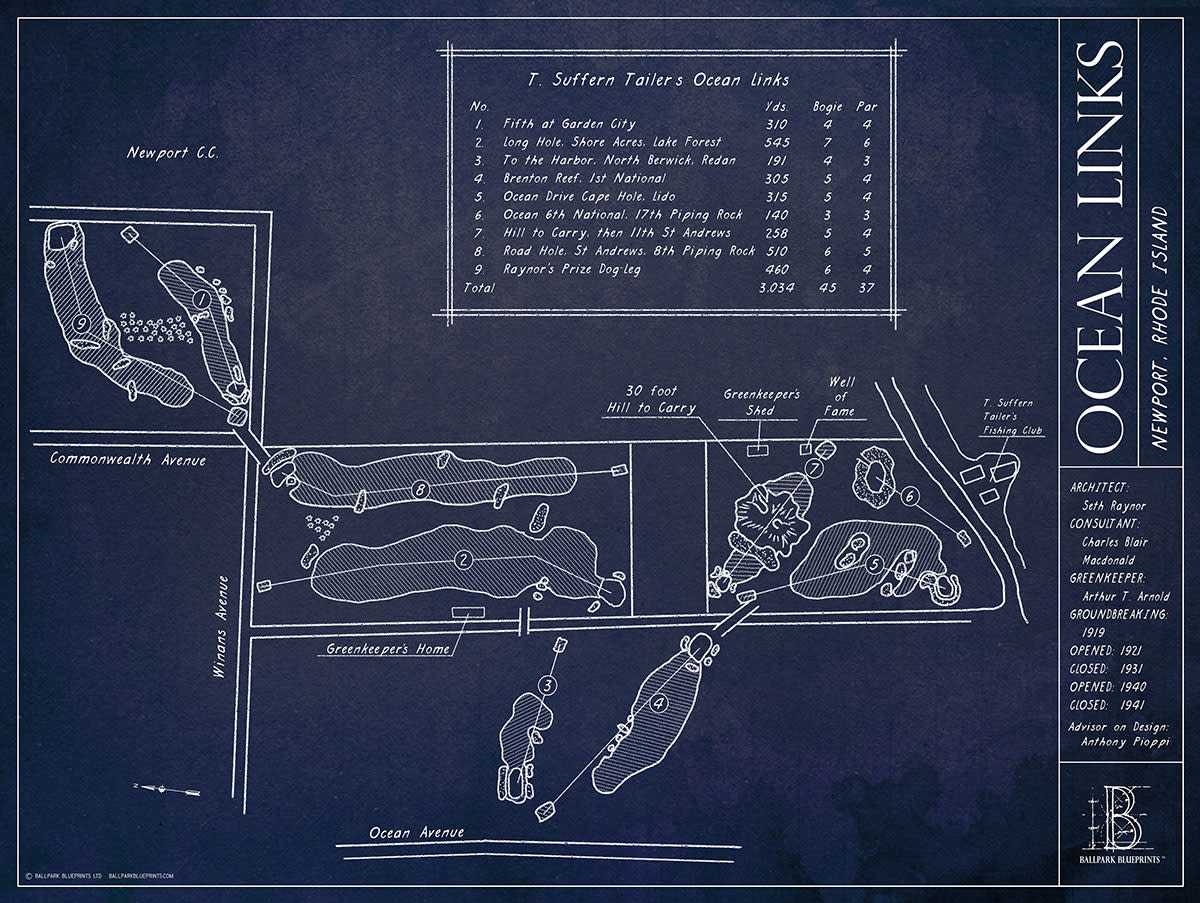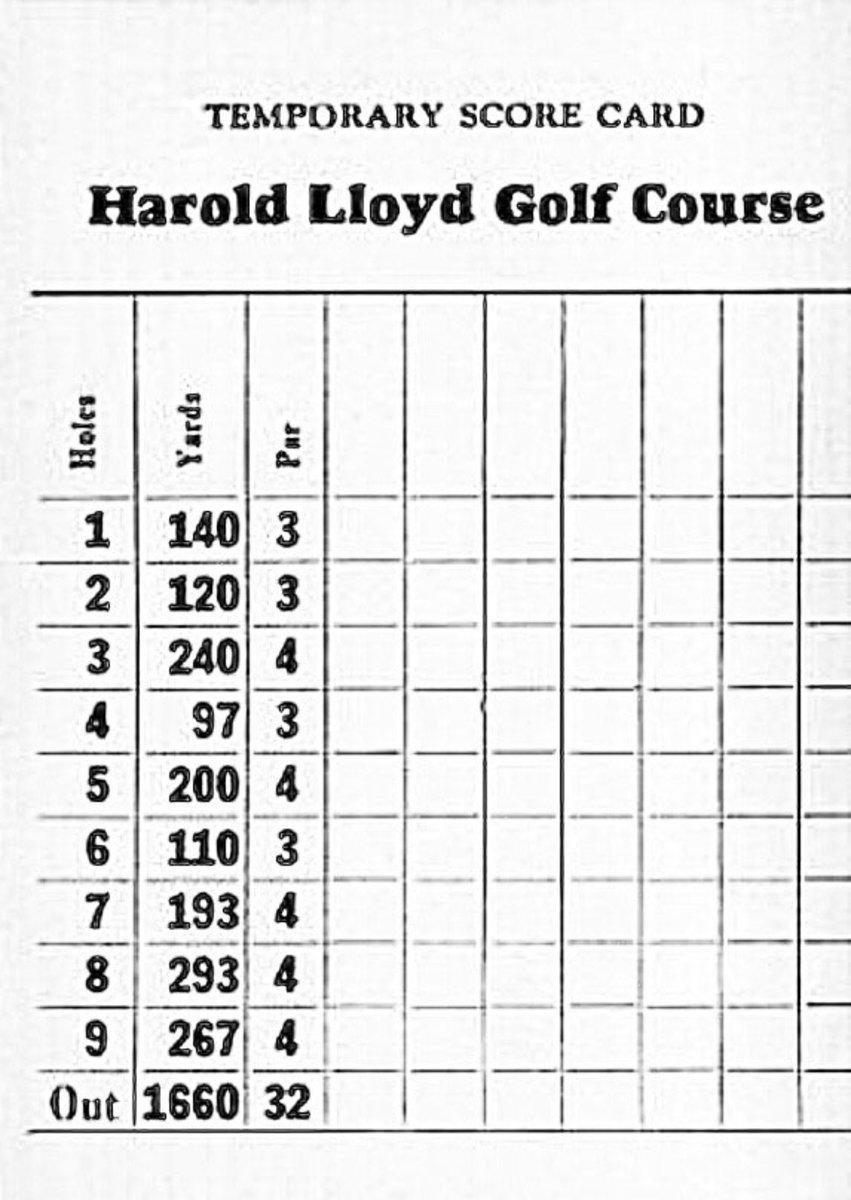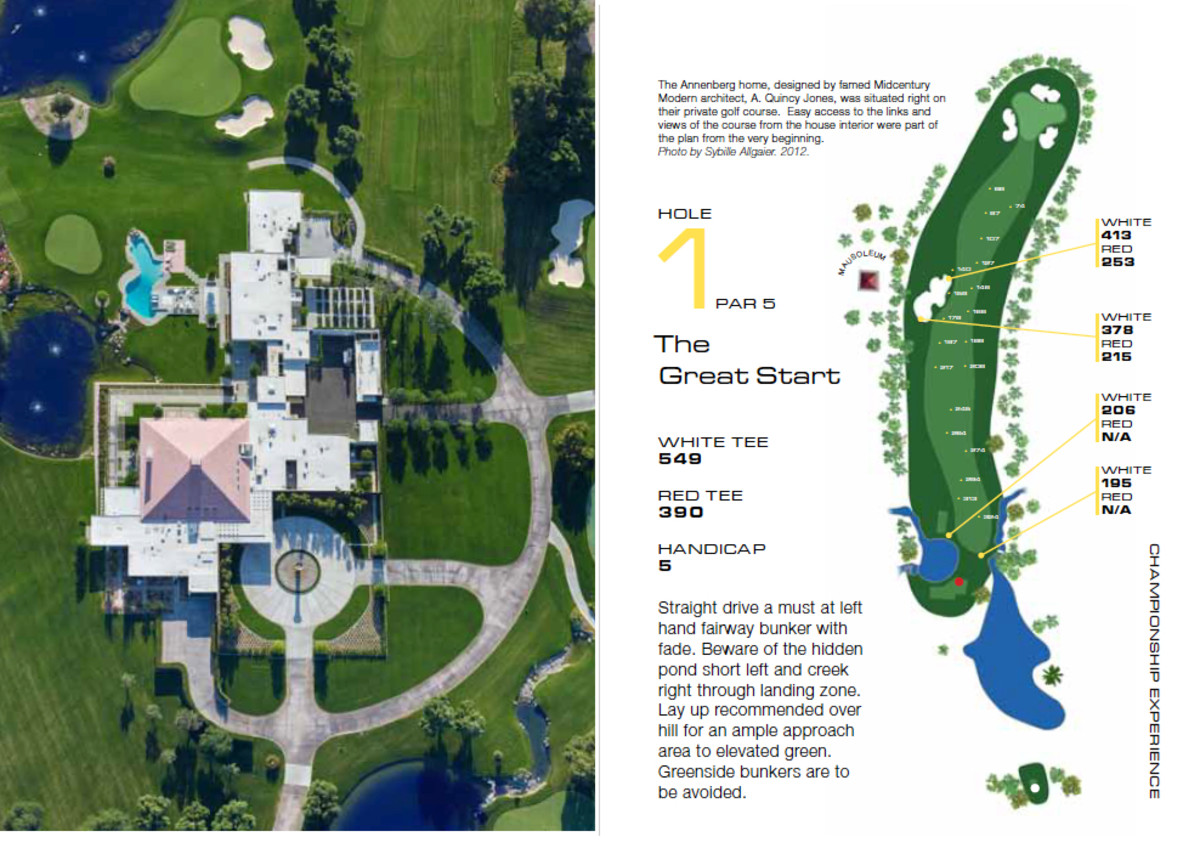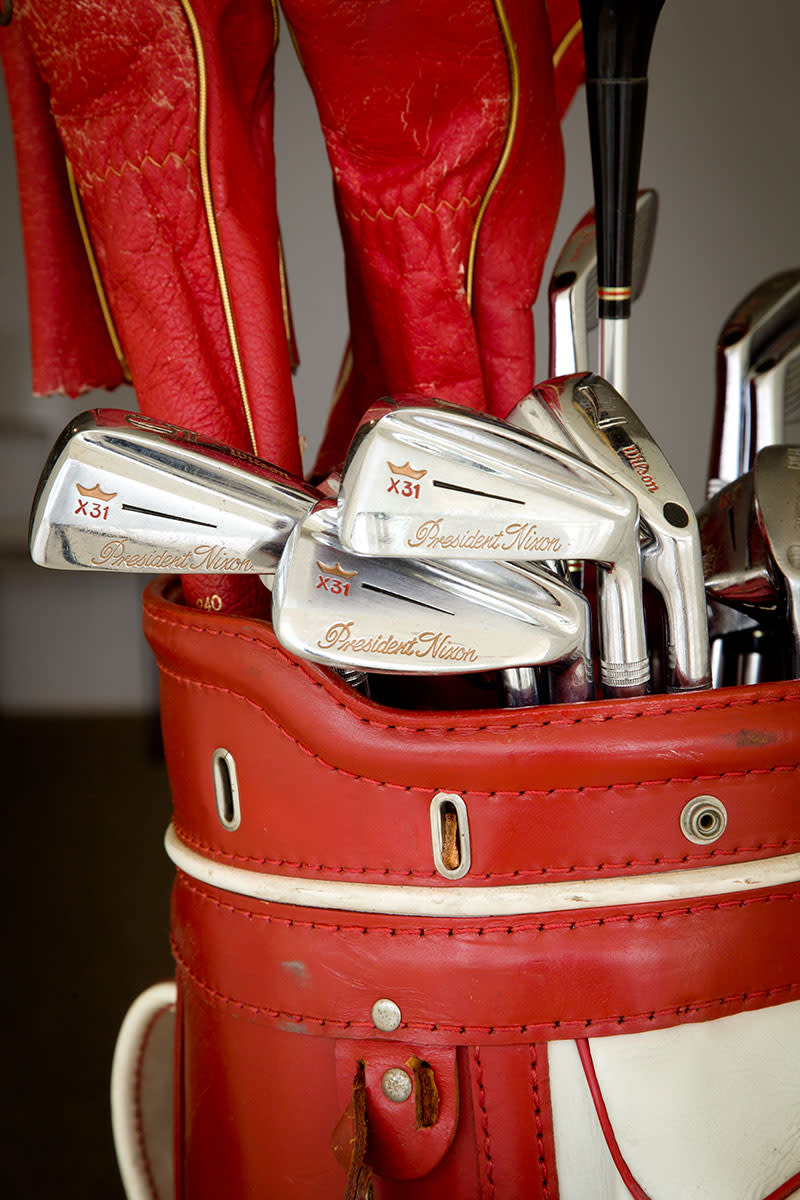The Stories Behind Golf's Ultimate Indulgence: A Private Course in Your Backyard

We’ve all experienced it on the golf course; it’s a beautiful day, sunny with a few wispy clouds, warm, but maybe a cotton sweater would be appropriate. Just a perfect day for golf — except you find yourself playing behind Dumb and Dumber, and right in front of Tiger and Phil.
You feel squished behind the worst and slowest group and pushed by the best and fastest players on the course. And the thought crosses your mind, “I wish I owned my own course and could play when I want and not be distracted by slow golfers or feel pushed by others.”
An interesting thought, but not new. There have been many such courses, and you might think they’re exclusive clubs like Seminole, Augusta National and Cypress Point, but the truly private courses have been built by individuals who own the course, and they have no members.
A few of these single-owner, no-member golf courses have existed, and they all have two things in common: money and a love of golf. T. Suffern Tailer Sr., a New York banker; Harold Lloyd, a star in silent movies who continued into the age of the “talkie;" and Walter Annenberg, who owned a publishing empire, all owned a personal golf course.
Tailer was a fair golfer with a son, Tommy, who was a good golfer. They played at Newport Country Club, which had a great history as host to the first U.S. Amateur and U.S. Open in 1895. Within a few years, though, the quality of the course had fallen behind with the introduction of the wound rubber-core ball, which carried farther than the old gutta percha golf ball.
Tailer voiced his concerns to the club, but there was no interest in lengthening and renovating the Newport course, so Tailer took matters into his own hands. He bought 70 acres for his own course next to the Newport Country Club. The purchase consisted of four lots that didn’t adjoin each other, creating obvious design problems.
To turn this jigsaw puzzle of property together into a modern golf course, Tailer hired one of the foremost course architects of the day, Charles Blair Macdonald, the 1895 U.S. Amateur champion and the designer of the Chicago Golf Club, the first 18-hole golf course in the United States in 1894, and the National Golf Links of America on Long Island in in 1909.
At 16, Macdonald had gone to St. Andrews University in Scotland and learned to play golf. After his return, he yearned to get America started in the game he loved. Macdonald returned to Great Britain in 1906 and spent a year studying the great courses and the highly regarded individual holes like the Redan at North Berwick, the Eden and the Road Holes at St. Andrews, and the Alps at Prestwick. His designs didn’t copy the best holes in Great Britain, but he used their strategies and shot values in his designs.
Macdonald mapped out Mr. Tailer’s new course, but the construction and refinement were done by Seth Raynor, his assistant. Raynor was a Princeton-educated civil engineer and surveyor described by Macdonald as not knowing “a golf ball from a tennis ball,” but, “when it came to accurate surveying, contours, plastic relief models of the land, draining, piping water in quantity over the entire course, wells and pumps, and in many instances clearing land of forests, finally resulting in preparing the course for seeding, he had no peer.”

Because of space limitations, the course contained only nine holes and topped out at 3,034 yards. Named Ocean Links, the course opened in July 1921 and Macdonald returned the lowest score of the day, going around the course twice in 42-43 for an 85, 13 over par but 3 under the “bogey” score of 88.
To play the course, one had to be asked by the sole member, Suffern Tailer. There was no clubhouse, pro shop or resident professional. Tailer paid for the course maintenance from his own pocket. Generously, Tailer allowed fellow club members of the Newport Country Club to play when they wanted.
Tailer had more in mind for his private course. He wanted an elite amateur stroke invitational tournament like the Golf Illustrated Gold Vase in England, to be played over 72 holes (eight times around the nine holes). The field was small, but players like Francis Ouimet, Jesse Guilford, Max Marston, Roland Mackenzie, Maurice McCarthy and Watts Gunn were among the invitees. The tournament was named the Golden Mashie, and the trophy was an 18-inch mashie made of solid gold and donated by Tailer.
The tournament, begun in 1923, was a great success, even though the contestants averaged around eight invitees. Guilford, the 1921 British Amateur champion, won it twice, and Francis Ouimet won with a 40-foot eagle putt on the last hole in 1925. In 1928, the 1925 British Amateur, George Von Elm, walked away from the field with the unimaginable score for the time of 272, 16 under par, and 21 strokes ahead of the second-place finisher.
Ocean Links was a great course and an invitation to play in the Golden Mashie was cherished by the lucky recipients.
Then on Christmas Eve, 1928, Tailer dropped dead at the dinner table of his in-laws at age 61. The following March, Tailer’s widow announced cancellation of the Golden Mashie, and although Tailer had set up a trust to keep Ocean Links operational, the family decided to sell the course in 1931.
The site of Ocean Links is now covered by private housing and part of the Brenton Point State Park. Ocean Links had a brief, but glorious run.

On the other side of the country in California, silent film star Harold Lloyd decided in 1923 to purchase 16 acres in Beverly Hills on Benedict Canyon Drive for a new home for himself and his wife to be known as Greenacres.
Lloyd was a talented actor and comedian, hard worker and an astute business man. He started by making short comedies, one a week, then graduated to longer films and full-length features. He owned the films himself and received 80 percent of the profits from Pathe, the distributor of his films and the entity that also funded them. By 1929, Lloyd had earned the equivalent of $2.1 billion in today's dollars.
Lloyd invested his money carefully, and while he spent lavishly, he didn’t lose what he made unlike other early stars who made and then lost vast fortunes. It didn’t hurt either that Lloyd made the transition from silent movie star to the “talkies,” and kept making large sums of money.
He originally played a sad character named Lonesome Luke, clearly a knockoff of Charlie Chaplin’s Little Tramp. He switched to play an “everyone” character who pursued the girl, tried to advance in business and make good in the world. His trademark was a pair of large horn-rim glasses, which he wore in every movie. His movies were hits and grossed more than that of the other two big silent movie comedy stars, Chaplin and Buster Keaton, combined.
Lloyd hired noted landscape architect A.E. Hanson to design the grounds for Greenacres. During a walk around the site with Hanson, Lloyd asked if a golf course could be included on the estate. Hanson knew nothing about golf course architecture, but blithely told Lloyd it could done.
Fortunately they contacted a top golf course architect, George C. Thomas, who turned down the engagement, but recommended William P. Bell, who had worked on construction of several Thomas designs.
Some credit the course to Alister Mackenzie, but clearly he was not the architect of Lloyd's new course. There are unconfirmed references to Mackenzie designing nine-hole courses for silent movie actors Chaplin and Douglas Fairbanks whose estates were near Lloyd's property, perhaps creating confusion regarding Mackenzie and the course design for Lloyd.
The golf course was seemingly unusual, not because private golf courses are themselves unusual, but because Lloyd had a physical infirmity that would suggest he wouldn't be a golfer. In 1919, Lloyd was posing for a publicity photo, lighting a cigarette with the burning fuse of a bomb that turned out to be live and not a dummy. An explosion ensued and mangled Lloyd’s right hand, costing him his thumb and index finger. Studio boss Sam Goldwyn, a former glove maker, fitted Lloyd with a prosthetic to replace the lost digits. Lloyd resumed acting and doing his own stunts. He was in wonderful physical condition, extremely coordinated and athletic, and learned to cope with an odd golf grip.
The official name of the course was the Harold Lloyd Golf Course, but Lloyd called his new golf course Safety Last! after his hit movie of the same name in which he hangs on the hands of a huge clock atop a tall office building. The course has been described as having nine holes, and some say it was a par-3 course, but there is confusion about the style and length of the course. Journalist, writer and golf course architect Geoff Shackelford believes Safety Last! was actually a five-hole course with alternate tees, making it a 10-holer, consisting of two par 4s and eight par 3s, all with water in play from a canoe run, which Bell included in his course design. One newspaper described the course with having only five greens, one of which was a “punch bowl” design.
Lloyd's course may have been short at 1,660 yards, but it wasn't easy. Professional golfers considered it one of the hardest-scoring courses in Southern California due to the water winding through each hole and the contoured greens. Par was 32. Bobby Jones played over Safety Last! in 34, 2 over par, and called the course one of the sportiest courses in the world.
Before the Los Angeles Open in 1927, Lloyd held a small professional invitational tournament with a field that included Tommy Armour, Von Elm, Bobby Cruickshank, Walter Hagen and Joe Kirkwood. The tournament was played over nine holes; perhaps there were alternate tees used to make the 10 holes into a nine-hole layout.
At that event, professional Eddie Loos, known as a great putter, returned a score of 28, 4 under par, to set the course record. Loos received a gold golf ball in recognition of his record.
By 1930, Lloyd started calling his course Welcome Danger, the title of his first talking movie in 1929, which was the highest grossing film of any he made.
Lloyd also hosted a Women’s Invitational Golf Tournament in October 1930 that included such top players as Maureen Orcut, Virginia Van Wie, Marion Hollins, Helen Hicks and Glenna Collett (Vare).
Lloyd lived at Greenacres until his death in 1971 at age 77. The house, the golf course and the grounds were open to tourists until 1975 when Greenacres was auctioned off. The new owner kept the house and six acres, but 10 acres, including the golf course, were sold off for development. Safety Last!/Welcome Danger was no more.
Lloyd is little known today except by film buffs, partly because he refused to allow his films to be shown on television because he believed the commercials ruined the flow of comedy. His films were feted at various film festivals and Lloyd put together two retrospectives of his prior work, Harold Lloyd’s World of Comedy (1962) and The Funny Side of Life (1963), which were well received and introduced a new generation to the funny man with glasses.

Walter Annenberg was the head of a publishing empire that included newspapers, magazines, radio and television interests. He was a major philanthropist and served as Ambassador to the United Kingdom. Originally from Pennsylvania, his interests took him around the world, but he chose to build a retreat in Rancho Mirage, Calif., known as Sunnylands, which included a home and a private golf course.
To design and build the course, Annenberg retained Dick Wilson, who had designed many respected courses in Florida and was used to creating interesting courses on flat land, and Annenberg had a flat desert property for his course. Wilson was already doing work at La Costa and Bel Air, so he and his assistant, Joe Lee, were well known in California golfing circles.
Annenberg wanted a 9-hole course that seemed to fit the size of the property he had purchased. If he wanted to play 18 he could go to nearby Tamarisk Country Club where he frequently played.
Wilson had an interesting philosophy on golf course design, stating “a golf course should appear more vicious to the player than it actually is. It should inspire you, keep you alert. If you’re playing a sleepy looking course, you're naturally going to fall asleep.”
What Wilson gave Annenberg was much more than just a 9-hole course: he gave him three 18-hole courses on the site.
There are eight fairway complexes and eight green complexes. Different tee boxes change holes completely, sometimes from different directions, sometimes from different angles. There are 13 man-made lakes on the course. The land dug up to create the lakes was used to elevate the greens and contour the fairways.
One green may serve both a par 3 and a par 5, but the structure isn’t anything like the double greens on the Old Course, each of which serve two parallel holes and are large enough that two different groups can be using the green at the same time. At Sunnylands, anything more than a few foursomes would be bumping into each other with only eight green complexes and eight fairways.
You can play one of three 18-hole renditions, the Historic (5,869 yards), the Championship (6,698 yards) or the Tournament (7,228 yards). The yardage book is 68 pages long, complete with an overview of the course routing you’ll be playing and a detailed chart of each of the holes.

A player might hit into the same green two or three times, but from such varied angles and distances that the green complex might look and feel completely different. The greens are contoured and surrounded by deep bunkers. One thing that is a constant: the edge of each green side bunker is exactly 31 inches from the edge of the green.
Dick Wilson liked small tee boxes and disliked ladies tees. After completion in 1964, ladies tees were immediately added. Mrs. Annenberg was also a golfer like her husband, so Wilson was disregarded in that respect.
When golf professional Ray Floyd saw the layout, he said, “The course architect, Dick Wilson, was a genius ... it’s so cleverly thought out.”

Every U.S. President has played there from Nixon to Obama, except for Carter who didn’t play golf. Nixon played there so often, he kept a set of clubs on site. Sunnylands has served as a place for State Department-level meetings, both for United States leaders and foreign dignitaries.
Annenberg died in 2002; his wife Leonore in 2009. The course and estate continue to be run by a trust, and it is even harder to play golf at Sunnylands.
The Sunnylands Center & Gardens with its rotating art exhibit and beautiful gardens and other facilities are open for visitors for free, but the golf course is closed to the public. The course is only played by attendees at the high-level conferences for which Sunnylands is now used.
